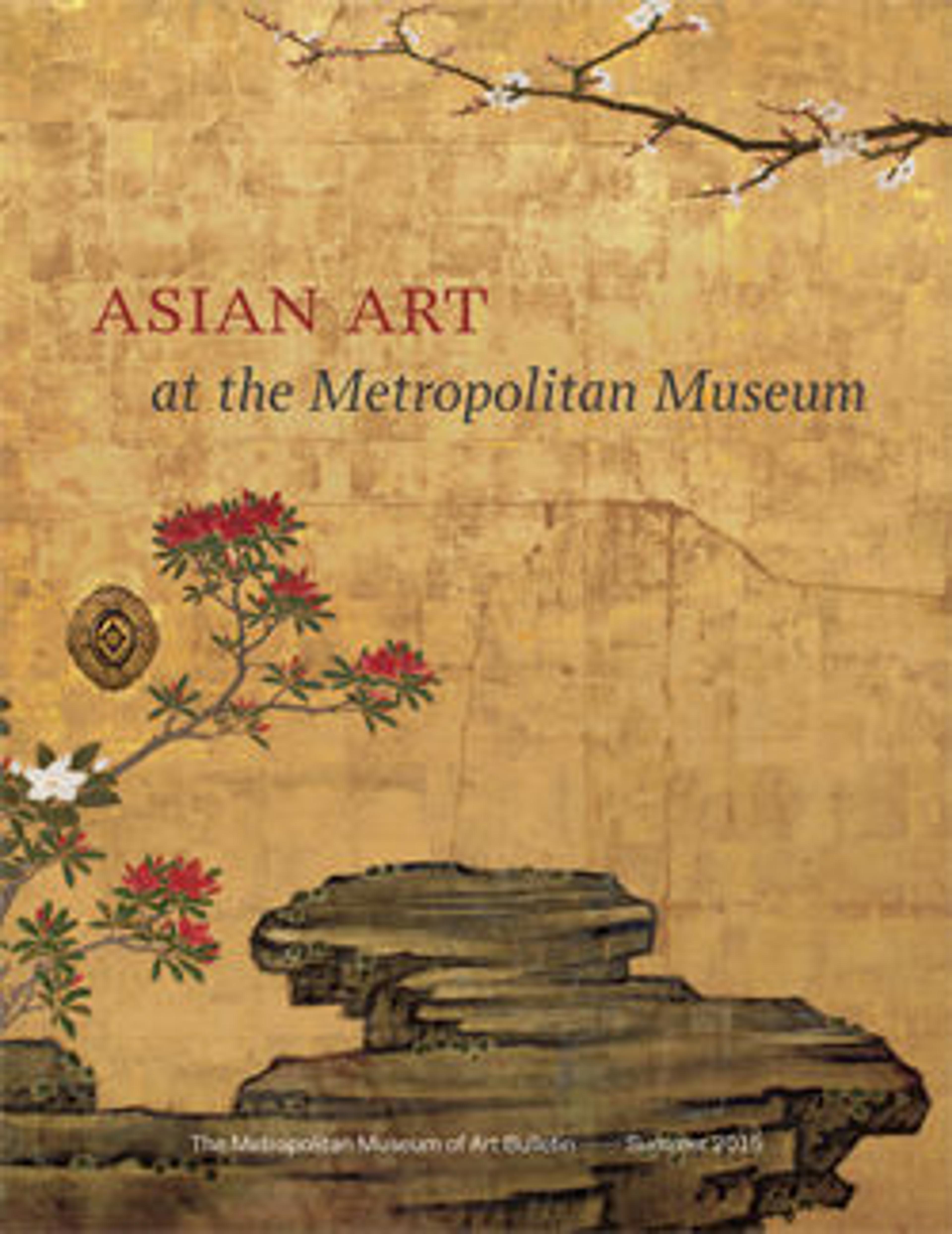The Vimalakirti Sutra
Throughout Buddhism’s early history in China, the ascetic aspects of the religion—the practice of celibacy and self-deprivation—came into conflict with the Chinese family system and social values. The Vimalakirti Sutra, celebrating the supremely wise layman Vimalakirti, provided canonical proof that enlightenment and salvation were possible even for believers who remained outside monastic orders.
In this scroll, which transcribes chapters 5 through 9 of the sacred text, the illuminated frontispiece portrays Vimalakirti seated on a dais preaching to a large audience. He is depicted with the attributes of a traditional Confucian scholar: long beard, fly whisk, and armrest. An inscription at the end of the scroll indicates that it was executed in remote southwest China, present-day Yunnan Province. Lavishly painted and written in gold and silver on purple silk, the scroll was commissioned by the prime minister of the independent kingdom of Dali as a gift for the Chinese ambassador.
In this scroll, which transcribes chapters 5 through 9 of the sacred text, the illuminated frontispiece portrays Vimalakirti seated on a dais preaching to a large audience. He is depicted with the attributes of a traditional Confucian scholar: long beard, fly whisk, and armrest. An inscription at the end of the scroll indicates that it was executed in remote southwest China, present-day Yunnan Province. Lavishly painted and written in gold and silver on purple silk, the scroll was commissioned by the prime minister of the independent kingdom of Dali as a gift for the Chinese ambassador.
Artwork Details
- 北宋 佚名 抄本《維摩詰經》 卷
- Title: The Vimalakirti Sutra
- Artist: Unidentified artist Chinese, early 12th century
- Period: Northern Song dynasty (960–1127
- Date: dated January 13, 1119
- Culture: China
- Medium: Handscroll; gold and silver on purple silk
- Dimensions: 11 in. × 26 ft. 7/8 in. (27.9 × 794.7 cm)
- Classification: Calligraphy
- Credit Line: From the Collection of A. W. Bahr, Purchase, Fletcher Fund, 1947
- Object Number: 47.18.2
- Curatorial Department: Asian Art
More Artwork
Research Resources
The Met provides unparalleled resources for research and welcomes an international community of students and scholars. The Met's Open Access API is where creators and researchers can connect to the The Met collection. Open Access data and public domain images are available for unrestricted commercial and noncommercial use without permission or fee.
To request images under copyright and other restrictions, please use this Image Request form.
Feedback
We continue to research and examine historical and cultural context for objects in The Met collection. If you have comments or questions about this object record, please complete and submit this form. The Museum looks forward to receiving your comments.
